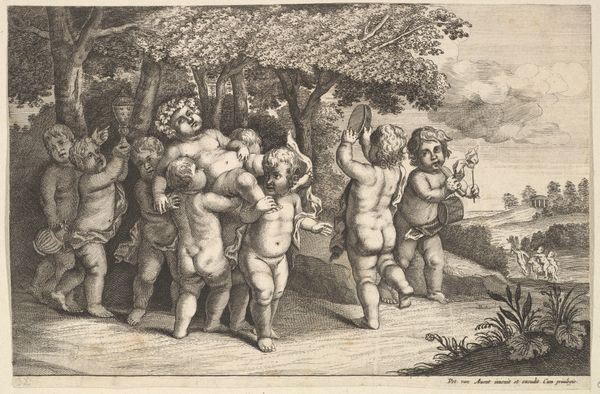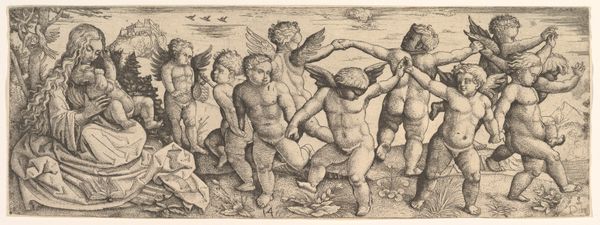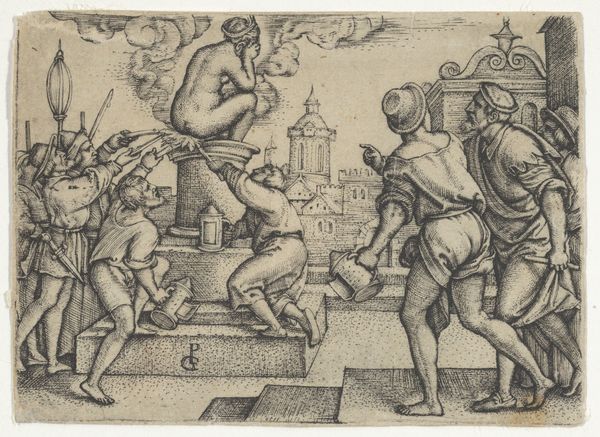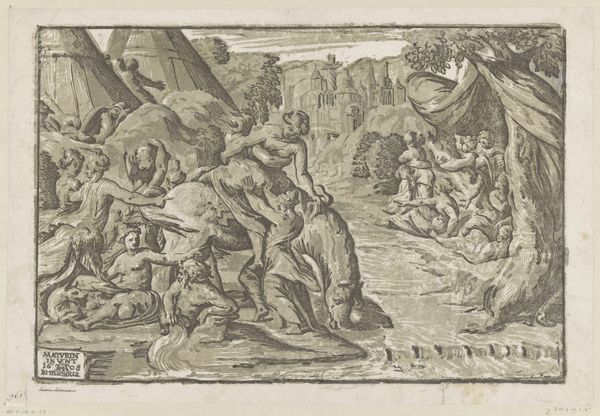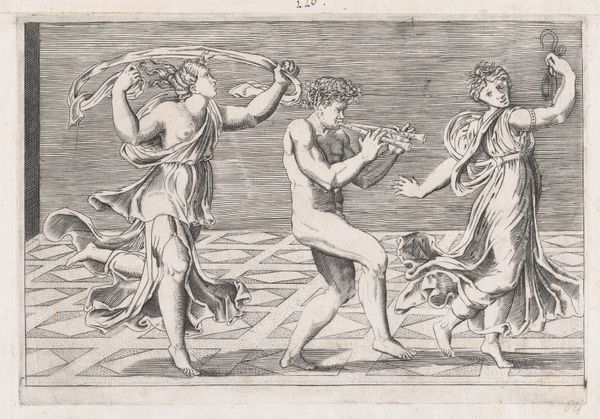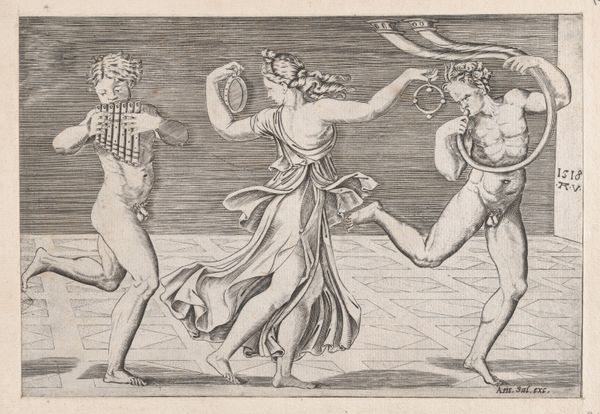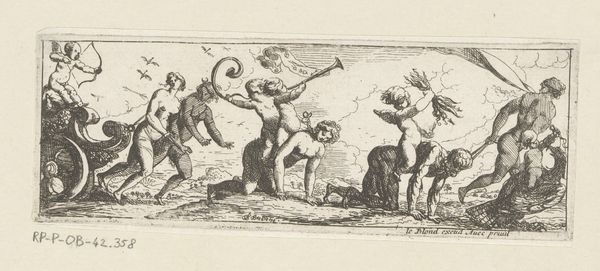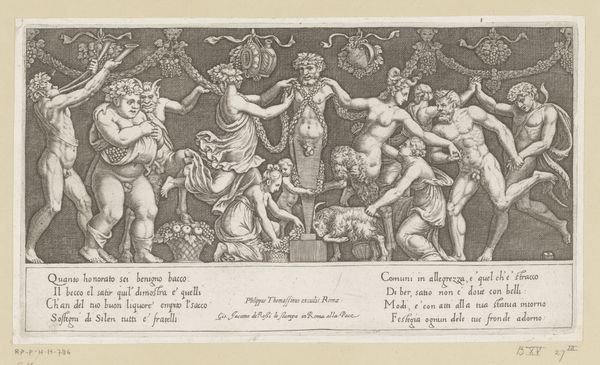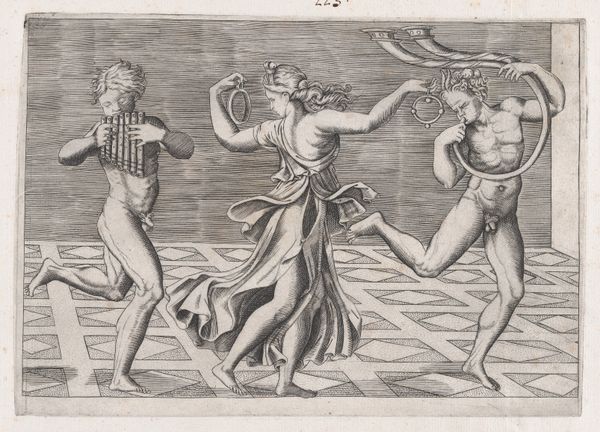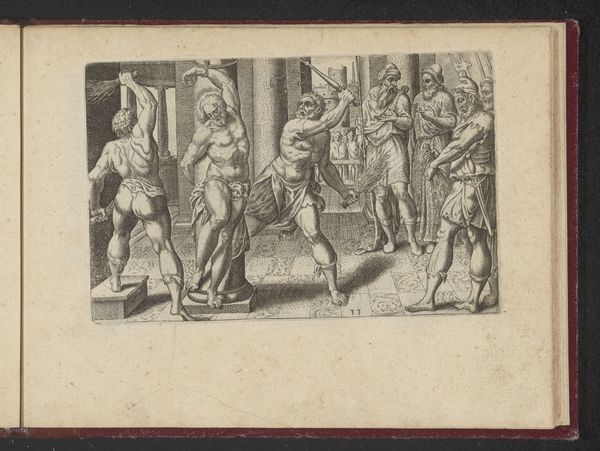
engraving
#
figuration
#
history-painting
#
italian-renaissance
#
nude
#
engraving
Dimensions: height 114 mm, width 170 mm
Copyright: Rijks Museum: Open Domain
Curator: Today we’re looking at “Five Putti near a Ruin,” a 16th-century engraving by Giulio Bonasone, currently held at the Rijksmuseum. Editor: I'm struck by how solid and almost sculptural these putti appear despite being rendered with fine lines. The composition is almost like a stage set, and I wonder, what kind of a story is this engraving meant to tell us? Curator: Perhaps not so much a story, as an investigation into the processes and social function of printmaking during the Renaissance. Note how the bodies of the putti relate to the architecture: rigid and constructed. Consider this work as a commodity, created using specialized tools and labor, meant for distribution among a specific market. How does thinking about its production change your view? Editor: I see your point. Thinking about it as a product shifts the focus from a purely artistic creation to one embedded in economic and social networks. Did Bonasone consider himself a craftsman as well as an artist? Curator: Undoubtedly. The sharp lines, the hatching that creates volume, are all achieved through careful mastery of engraving. High art and craft weren't as separated then as they are today. The consumption of such images would dictate their creation. Editor: That’s fascinating, framing the artistic merit around the process of creation itself rather than the intention or reception. It helps me consider artistic skill beyond self-expression, toward cultural participation in an economy of images. Curator: Precisely! By questioning what art *is* in its historical context, we better understand its relationship to its makers, consumers, and society as a whole.
Comments
No comments
Be the first to comment and join the conversation on the ultimate creative platform.
